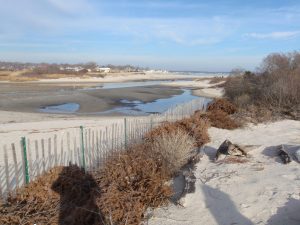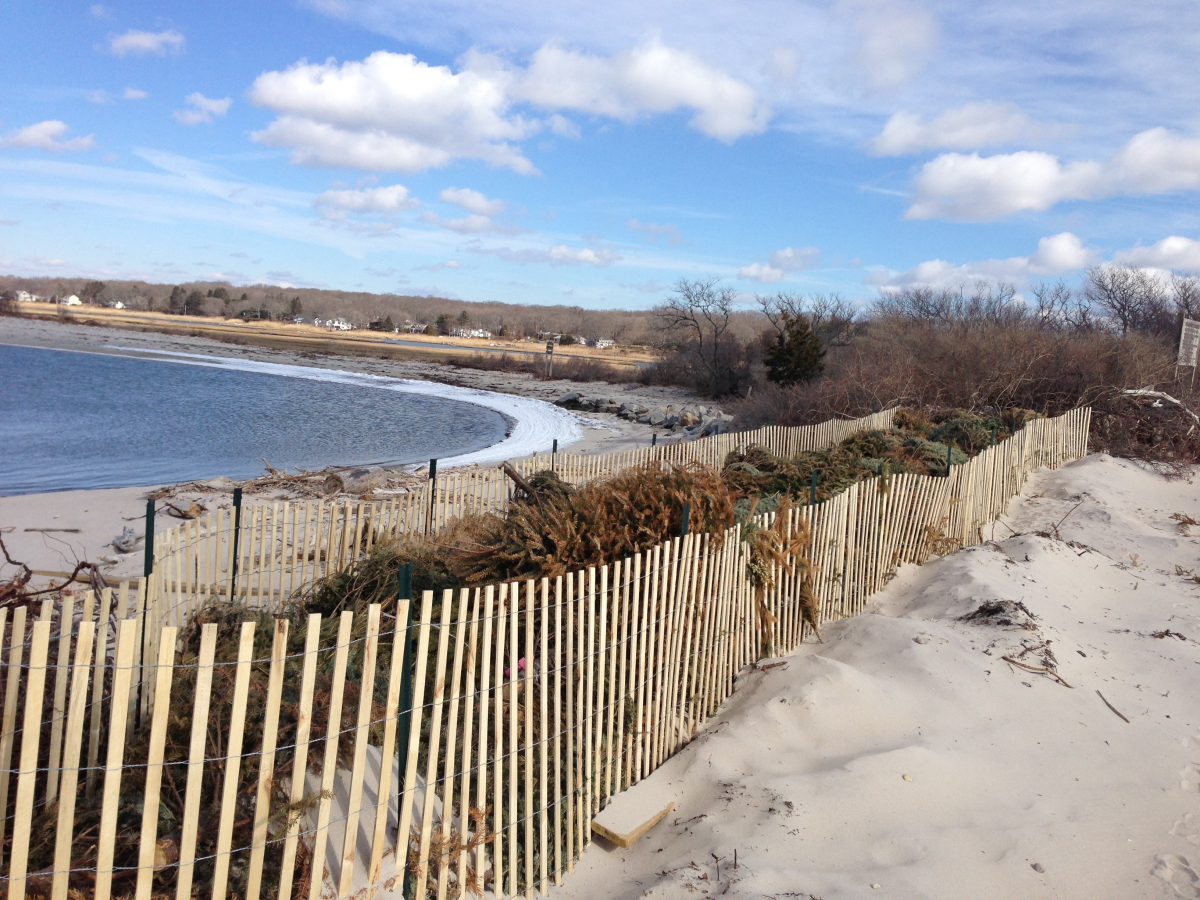After they are stripped of festive tinsel and ornaments, most natural Christmas trees find their way out the door and into the dump. But there’s another possibility for these discarded evergreens: helping prevent coastal erosion.
“It serves a dual purpose right now, because people have their Christmas trees and they just throw them away; but if possible, we can use them to mitigate erosion,” Jennifer O’Donnell, UConn associate research professor of marine sciences, says.
Beach and marsh erosion threatens shoreline properties and ecosystems. Buildings and infrastructure close to the shoreline are in danger, as are many plants and animals. Some organisms may be able to move inland, but many depend on their specific coastal habitats for survival.
While erosion is a natural process, human development and climate change have made it worse. In undeveloped areas, as shorelines erode, coastal ecosystems simply move further inland. But because roads and buildings now dominate much of the shoreline, there are few places for them to move.
Additionally, sea level rise, a consequence of climate change, is accelerating erosion.
“Beaches and dunes are naturally dynamic habitats, and they tend to migrate landward,” Juliana Barrett, extension educator and coastal habitat specialist at Connecticut Sea Grant, says. “Because of land use, there’s not a lot of places and distance for our beaches and dune systems to migrate.”

Connecticut Sea Grant, based at UConn Avery Point, is part of the national Sea Grant program. The program is dedicated to promoting the sustainable use of marine resources through research, outreach, and education – and addressing the problem of coastal erosion fits right into that mission. That’s where the Christmas trees come in.
On beaches, Christmas trees can help prevent erosion by trapping wind-blown sand to build up sand dunes which help prevent flooding.
While almost anything can be used to trap wind-blown sand, old Christmas trees present an attractive option because they are a natural resource that would likely end up in a landfill otherwise.
“It’s one of the first protective barriers we have when a storm is coming,” Barrett says. “It’s going to hit the beaches and dunes first and protect what’s behind it.”
Trees can also help with marsh erosion. Marshes are important coastal features that protect against flooding during storm surges and provide habitats to unique organisms.
With marshes, rather than building up dunes, the trees can help prevent sediment movement.
“Instead of keeping it away from the water, we want to get sediment transported by the waves to stop,” O’Donnell says.
This will help keep marshes intact rather than being swallowed by the ocean and erasing the transition zone between the water and the land.
There are some potential drawbacks, however: one of the major challenges of evergreens is they can be blown or washed away if not secured properly.
Shoreline towns such as New London, East Lyme, and Waterford have been using discarded Christmas trees to prevent erosion. After Hurricane Sandy in 2012, Waterford placed evergreens between a set of dune fencing and staked them down. Thankfully, enough time passed without a severe storm to allow the the trees, left undisturbed, to become safely buried in the rebuilt dunes.
“It has been done and it has been done successfully,” Barrett says. “But it’s a roll of the dice.”
Another consideration is how to transport and place the trees without disturbing the native vegetation. Native fauna such as American beach grass play an important role in preventing erosion as they help hold sand in place.
“They really help hold in the sand,” Barrett says. “The vegetation is a really, really important part of these systems.”
While using evergreens may not be ideal in every coastal environment, they have been used widely in states such as Louisiana, which is losing up to 20 meters of land per year to rising sea levels.
“In certain places it’s a worthwhile endeavor to keep them out of the dumps,” O’Donnell says.
Learn more about using Christmas trees as erosion control in dunes at the Connecticut Sea Grant website.
Follow UConn Research on Twitter & LinkedIn.



